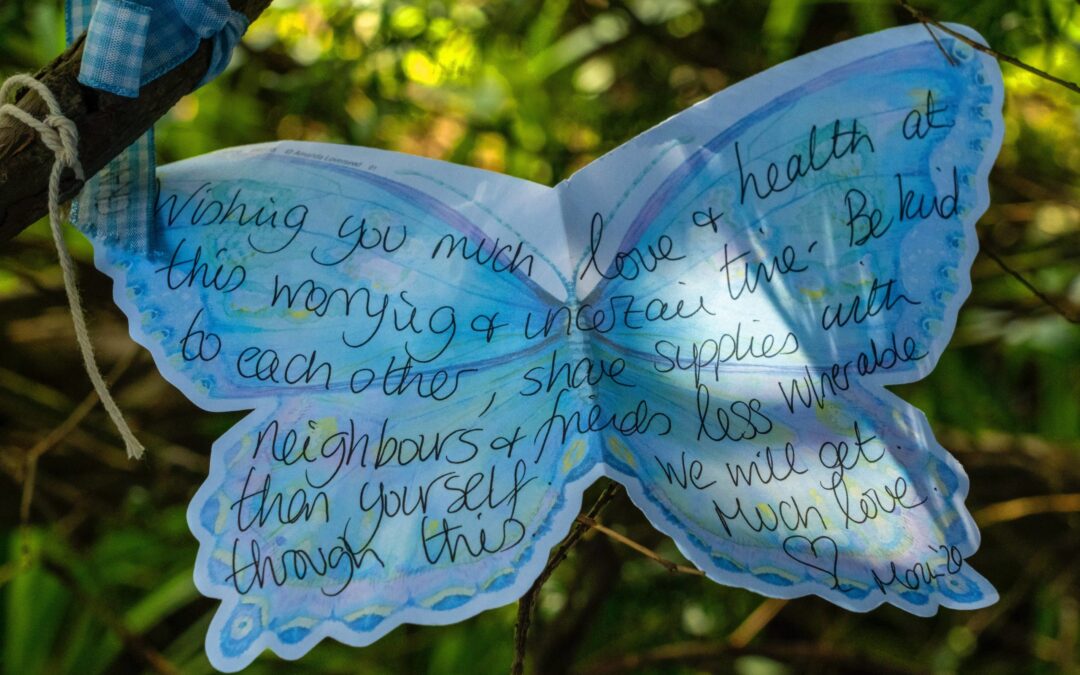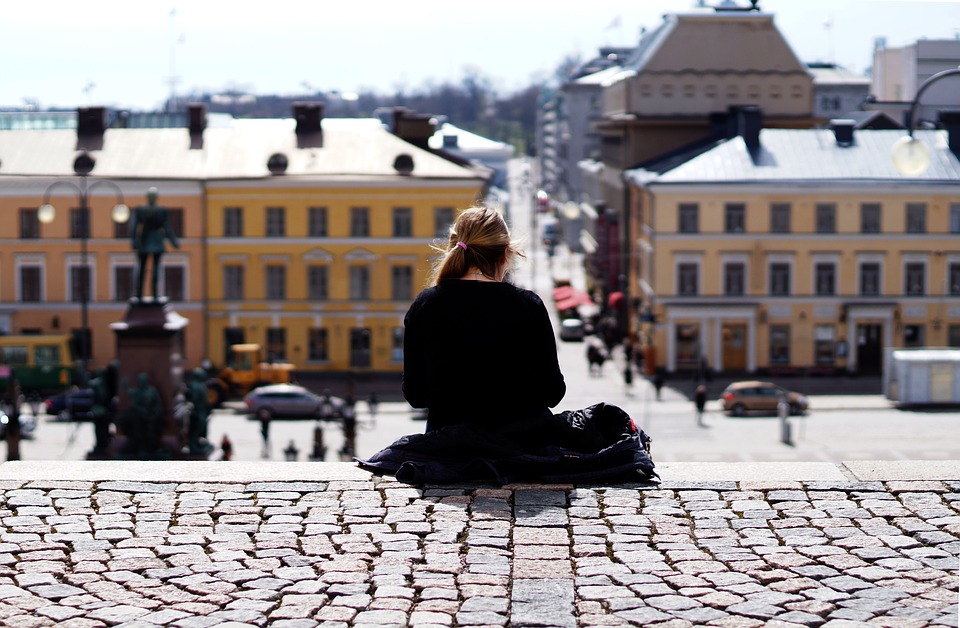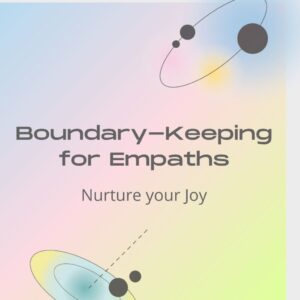
by user_dd | Oct 27, 2020 | Community Conversations
“As within, so without; as without, so within” A timeless Hermetic principle that means something completely new in light of COVID-19 and forced lockdowns that keep you inside and gathering with others less.
It’s like a big mirror constructed in front of you that won’t go away. Everywhere you look, you see evidence of your inner world reflected in your outer reality: the quality and cleanliness of your space, the frequency of your social outreach, the types of food you eat and the content you ‘consume.’
So when you can no longer escape the clear and obvious reminders of who you really are by leaving your home space daily for work or errands, you’ll probably experience that uncomfortable realization that you’re not who you thought you were. Evidence of your subconscious becomes splattered around your home. And the pressure to do something different increases.
Before long, all the things you’ve been trying to avoid are now staring you in the face…and you have a choice. Do you accept them as they are, or do you change them?
This has been hard, because when you spend most of your day avoiding what it means to be human, who you really are after all the masks and lies of your personality, you can get uncomfortable pretty quickly. The prospect of having to look at and change multiple ingrained habits or personality quirks that you don’t like all at once is overwhelming.
(As an aside, sometimes we spend a whole year focusing on just one aspect of our personality in the Kabbalah Ascension program through the Modern Mystery School.)
So here are a few reminders just in case you find yourself in the middle of the second COVID-19 wave with no relief in sight:
-
- Be Gentle With Yourself: remember that your negative self-talk is just that, negative. And who needs more negativity in their life right now? Throw that negativity out and write out 5 positive things about yourself. This practice seems cheesy but I promise you there is ample scientific research to back it up. Go ahead, I bet you can’t do it in under a minute.
- Weekly Check-in’s: Ha! You did it in under a minute didn’t you. Reverse psychology works…now back to weekly check-in’s. Schedule weekly check-in’s with a few friends and keep your commitment. Sure, there may be days when you don’t feel like it or it’s just a bad time. Still check-in, whether that means sending a text or rescheduling, but don’t let yourself off the hook altogether here, the point is to express yourself rather than keep it all inside until it boils and explodes somewhere creating a mess. We’ve all done that, so why not try something different?
- Exercise: Lockdown doesn’t mean you can’t leave your house. Get up, walk around, do some push-ups…the increased blood flow will do your body good, not to mention detoxifying and rejuvenating your body. This will boost your mood, guaranteed. So just find the best way that you like to move and get your heartbeat up, OK?
- Breathe: Most people don’t actually breathe, so when all else fails, remember to take a deep breath into the diaphragm and even hold it for a few seconds to let that good ole’ oxygen penetrate your lungs. If you did that, congrats, you just meditated (again, reverse psychology right?)! Now just do that for 10 more breathes, deep ones. Take your time. You’ll feel better immediately after and will have more mental clarity with which to encounter what’s next. And who knows what that’ll be…it’s 2020 after all, so be prepared with a full breathe. With the election in a few days, we’re all going to need it…
by user_dd | Dec 23, 2016 | Community Conversations

Raise your hand if you’ve done this before—tried to dissect what meditation is while meditating? While very meta, this can be distracting. In this article, we review some meditation techniques and styles so that next time you meditate you can focus on doing it rather than thinking about it.
What is meditation?
There are no universal goals and methods, nor even a consistent definition of what meditation really is. Different groups have completely different definitions for what meditation is, how to do it, what it’s for, and why it’s worth practicing. Also, there are many branches of Buddhism that commonly reference meditation as a means of attaining enlightenment of some form. Suffice it to say, meditation is a generic label for a wide spectrum of mind training practices that exists across many cultures and traditions.
Different groups have diverse opinions on what the practice is, the attainability of certain mind states, and even the definition of nirvana itself. Various branches of Christianity view meditation as a means of bringing the practitioner closer to God. With the advent of eastern practices leaking into contemporary western society, many have come to argue that Christian meditation does not aim to pursue spiritual enlightenment at all, but rather to fill the time with the recitation of Biblical passages or devotionals.
It is worth noting that the 21st century mindfulness movement appropriates its roots from the Buddhist notion of Sati. Mindfulness is still a relatively new term for an old concept that’s always been trending in history. Where Christian and Buddhist forms of meditation often focus on spiritual growth, the more recent mindfulness movement ultimately dwells on workplace bodily intervention and maximizing workforce productivity.
How do I meditate?
The views that I have about meditation in this article are limited specifically to simple pieces of advice—they are not an attempt to reduce the huge variety of traditions and practices out there to a singular phenomenon or practice. For the purposes of this article, meditation is a series of practices that exist to promote psychological and spiritual growth as defined by the individual. For me, meditation is the paradoxical act of sitting still: willfully letting go of any intent to act, think and feel and slowly let all of the impulses, feelings, memories from below the conscious surface of your mind harmlessly unfurl. This means that experiencing strange and uncomfortable emotions and thoughts might be a part of the process.
Below I provide different physical forms that meditation can take place, but the internal technique you choose is up to you. Our goal is to integrate meditative moments into all aspects of your life. This guide is written under the assumption you’re busy: the practices I’ve listed below benefit incrementally from practice, so regardless of whether you end up practicing 5 minutes a day or once every few months, you will experience more benefits over time the more consistent you are with your practice..
Sitting Meditation Techniques
The first one that I’d like to introduce here is sitting meditation, where you sit in a chair when you meditate. A good meditation posture will ultimately prevent your posture from pulling you out of meditation, but it should not be so comfortable it lulls you to sleep. Meditations done in a chair are ideally short, I’ve found 20 minutes of zazen in a chair to be something I can do silently in public. While the usual assumption of meditation is to find as peaceful and quiet of a place as possible, experiencing your attention morph and shift in a busy place is a key part of zazen!
Walking Meditation Techniques
Here’s a practice I engage in on an almost daily level: the walking meditation. The act of walking itself can end up being a meditation in itself, though different schools will emphasize different parts of the experience. A unique part of walking meditation is the physicality of the body in motion. With walking meditation, I find the most crucial elements to focus on are the process of lifting your foot and planting the next step down. Walking meditation is crucial to me as it puts my experience of the world in perspective: from my steps, to my knowledge of the length of my commute, to the feelings and thoughts I have each step of the way to the end. Basically, I like walking meditations because of their subtle moments which make room for greater reflection.
Zhan Zhuang Meditation Technique
From my own training, there is the classical chinese Zhan Zhuang meditation, which literally means “standing like a post.” Zhan Zhuang is best done 15-20 minutes a day, ideally each day. There are many, many variations of this practice and many would argue it itself is not a form a meditation. The goal of Zhan Zhuang is to learn how to hold the position comfortably. Based on my previous definition of meditation: to willfully let go of any intent to act, think and feel, and to slowly let all your impulses, feelings, and memories harmlessly unfurl, Zhan Zhuang does exactly that. As a practice, I love it as a way to return to my center of gravity, emotionally and physically.
Meditation is an age old practices with different goals, methods, and definition spanning history and geography. There have never been “universal” mediation practices nor are there universal goals to meditation. In spite of that, modern science is currently under the impression that certain definitions of meditation work to promote peace of mind and, there is emerging proof meditation can physiologically changes its practitioners. This shows a few things: even though our lives are radically different than those of thousand years ago, meditation definitely does something.



